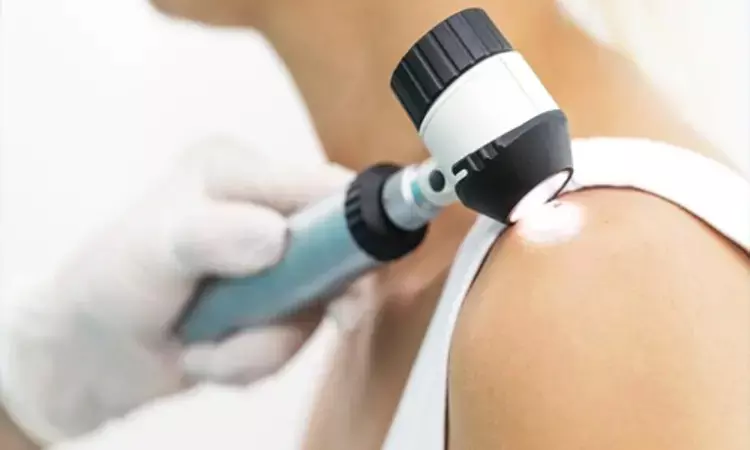- Home
- Medical news & Guidelines
- Anesthesiology
- Cardiology and CTVS
- Critical Care
- Dentistry
- Dermatology
- Diabetes and Endocrinology
- ENT
- Gastroenterology
- Medicine
- Nephrology
- Neurology
- Obstretics-Gynaecology
- Oncology
- Ophthalmology
- Orthopaedics
- Pediatrics-Neonatology
- Psychiatry
- Pulmonology
- Radiology
- Surgery
- Urology
- Laboratory Medicine
- Diet
- Nursing
- Paramedical
- Physiotherapy
- Health news
- Fact Check
- Bone Health Fact Check
- Brain Health Fact Check
- Cancer Related Fact Check
- Child Care Fact Check
- Dental and oral health fact check
- Diabetes and metabolic health fact check
- Diet and Nutrition Fact Check
- Eye and ENT Care Fact Check
- Fitness fact check
- Gut health fact check
- Heart health fact check
- Kidney health fact check
- Medical education fact check
- Men's health fact check
- Respiratory fact check
- Skin and hair care fact check
- Vaccine and Immunization fact check
- Women's health fact check
- AYUSH
- State News
- Andaman and Nicobar Islands
- Andhra Pradesh
- Arunachal Pradesh
- Assam
- Bihar
- Chandigarh
- Chattisgarh
- Dadra and Nagar Haveli
- Daman and Diu
- Delhi
- Goa
- Gujarat
- Haryana
- Himachal Pradesh
- Jammu & Kashmir
- Jharkhand
- Karnataka
- Kerala
- Ladakh
- Lakshadweep
- Madhya Pradesh
- Maharashtra
- Manipur
- Meghalaya
- Mizoram
- Nagaland
- Odisha
- Puducherry
- Punjab
- Rajasthan
- Sikkim
- Tamil Nadu
- Telangana
- Tripura
- Uttar Pradesh
- Uttrakhand
- West Bengal
- Medical Education
- Industry
Topical hypericin photodynamic therapy safe and effective against early-stage mycosis fungoides: JAMA

USA: A new study published in the Journal of American Medical Association - Dermatology suggests that synthetic hypericin photodynamic therapy (PDT) has a favorable safety profile and is efficacious in early-stage patch and plaque mycosis fungoides−cutaneous T-cell lymphoma (MF/CTCL).
Given the chronic nature of mycosis fungoides-cutaneous T-cell lymphoma, new therapy with minimal short- and long-term side effects is required. A novel, non-mutagenic photodynamic therapy is 0.25 percent synthetic hypericin ointment activated with visible light. As a result, the purpose of this study was to assess the efficacy and safety of 0.25 percent topical synthetic hypericin ointment triggered by visible light as a non-mutagenic PDT in early-stage MF/CTCL.
From December 2015 to November 2020, 39 academic and community-based US medical centers participated in a placebo-controlled, multicenter, double-blind, phase 3 randomized clinical trial (FLASH study). Adults (18 years old) with early-stage (IA-IIA) MF/CTCL took part in the study. In cycle 1, patients were randomly assigned to receive hypericin or placebo twice weekly for 6 weeks to three index lesions. All patients in cycle 2 got the active therapy for 6 weeks to index lesions. Both the index and extra lesions received active medication for 6 weeks during cycle 3.
The major endpoint for cycle 1 was the index lesion response rate (ILRR), which was defined as a 50% or higher improvement in the modified Composite Assessment of Index Lesion Severity (mCAILS) score from baseline after 6 weeks of therapy. Open-label response rates were secondary end objectives in cycles 2 and 3. Adverse events (AEs) were recorded at each treatment visit, at the end of each cycle, and subsequently once a month for six months. On December 21, 2020, data analysis was carried out.
The highlights of this study were:
1. There were 169 patients with early-stage MF/CTCL in the study population where Hypericin PDT outperformed a placebo after six weeks of treatment.
2. After two cycles of hypericin PDT, the ILRR rose to 40% in the patients, and after three cycles, it rose to 49%.
3. In both patch and plaque type lesions, significant clinical improvements were seen, and they were consistent regardless of age, sex, race, stage IA vs. IB, time since diagnosis, and the number of prior therapies.
4. Mild local skin and application-site responses were the most frequent AEs associated with therapy, but there were no major adverse medication reactions.
The researchers conclude," topical synthetic hypericin activated with visible light is an effective and well-tolerated PDT for early-stage MF/CTCL."
Reference:
Kim, E. J., Mangold, A. R., DeSimone, J. A., Wong, H. K., Seminario-Vidal, L., Guitart, J., Appel, J., Geskin, L., Lain, E., Korman, N. J., Zeitouni, N., Nikbakht, N., … Poligone, B. (2022). Efficacy and Safety of Topical Hypericin Photodynamic Therapy for Early-Stage Cutaneous T-Cell Lymphoma (Mycosis Fungoides). In JAMA Dermatology. American Medical Association (AMA). https://doi.org/10.1001/jamadermatol.2022.2749
Neuroscience Masters graduate
Jacinthlyn Sylvia, a Neuroscience Master's graduate from Chennai has worked extensively in deciphering the neurobiology of cognition and motor control in aging. She also has spread-out exposure to Neurosurgery from her Bachelor’s. She is currently involved in active Neuro-Oncology research. She is an upcoming neuroscientist with a fiery passion for writing. Her news cover at Medical Dialogues feature recent discoveries and updates from the healthcare and biomedical research fields. She can be reached at editorial@medicaldialogues.in
Dr Kamal Kant Kohli-MBBS, DTCD- a chest specialist with more than 30 years of practice and a flair for writing clinical articles, Dr Kamal Kant Kohli joined Medical Dialogues as a Chief Editor of Medical News. Besides writing articles, as an editor, he proofreads and verifies all the medical content published on Medical Dialogues including those coming from journals, studies,medical conferences,guidelines etc. Email: drkohli@medicaldialogues.in. Contact no. 011-43720751


